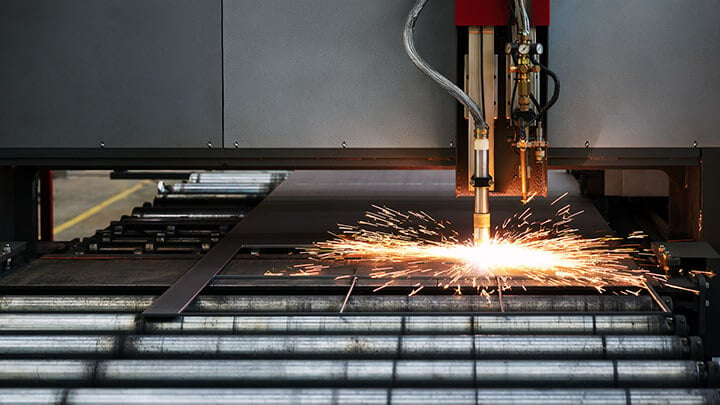Understanding the 2023 Updates to the CSA C22.2 No. 301 Standard – Part 3

17 Jun 2025
Industry Canada Requirements for Electromagnetic Emissions
At times, electrical product standards have additional requirements that highlight other regulations with which products need to comply of which manufacturers may have been previously unaware, or to provide a greater adoption of the requirements. An example in all Canadian electrical standards is that warning markings and information needs to be provided in both English and French. Since Canada is a bilingual country, this is a federal requirement.
For CSA C22.2 No. 301:2023, there are two requirements that were added to highlight federal requirements with which equipment manufacturers should already be complying, but experience had shown were not consistently required. These are Industry Canada regulations (4.1.9) and Pressure vessels (4.1.10). For part three of this blog series, we will focus on the Industry Canada regulations.
Clause 4.1.9 of CSA C22.2 No. 301 states: “Machinery shall be designed to comply with applicable Industry Canada regulations (e.g., Industry Canada ICES-001 or ICES-003, or Annex E).”.
In 2015 Industry Canada was renamed “Innovation, Science and Economic Development Canada” (ISED). Despite the different name, the requirements being referred to are the same.
The ICES series of standards, “Interference-Causing Equipment Standards”, are Federal requirements that cover electromagnetic (EMC) emissions. During the stakeholder engagement process for CSA C22.2 No. 301, it was noted that many industrial machinery products did not demonstrate evidence of conforming to this Federal requirement, and it was determined that many stakeholders were previously unaware that this was a requirement. For this reason it was determined to add this requirement into the standard so that manufacturers, users, inspection agencies and certification bodies were all aware of it.
Currently the following ICES standards have been published:
| Number | Title |
| ICES-GEN | General Requirements for Compliance of Interference-Causing Equipment |
| ICES-001 | Industrial, Scientific and Medical (ISM) Equipment |
| ICES-002 | Vehicles, Boats and Other Devices Equipment with Internal Combustion Engines, Traction Batteries or Both |
| ICES-003 | Information Technology Equipment (including Digital Apparatus) |
| ICES-004 | Alternating Current High Voltage Power System |
| ICES-005 | Lighting Equipment |
| ICES-006 | AC Wire Carrier Current Devices (Unintentional Radiator) |
| ICES-008 | Cable Distribution Networks |
For industrial machinery, typically ICES-GEN in combination with ICES-001 will apply to the products within the scope of CSA C22.2 No. 301, unless the equipment falls within the exemptions provided for in the ICES standards.
The scope of ICES-001 covers all equipment within the scope of CSA CISPR 11, unless covered by another ISED standard. Note that, additionally, if the equipment incorporates a radio then the relevant Radio Standards Specifications (RSS) also apply – such as RSP-100, RSS-102, RSS-GEN, as well as the specific RSS for the radio(s). Exemptions to ICES standards used for a device containing a radio do not extend to the RSS standards. For products that incorporate a radio module that is already certified and used within the restrictions of the original certification, further certification may not be needed but the radio still must comply with RSS requirements.
ICES-001 requires compliance with conducted and radiated emissions but does not set requirements for immunity.
For products to comply with the ICES requirements there are testing, reporting, labelling and manual requirements.
CSA C22.2 No. 301 provides an alternative method for compliance to clause 4.1.9 in Annex E, which uses text excerpted from IEC 60204-1:2016 Ed. 6, clause 4.4.2. This provides an alternative approach to compliance with the CSA standard by utilizing an analytical approach. This approach requires testing of equipment, unless both conditions below are met:
- All incorporated devices and components comply with the EMC requirements for the intended EMC environment, and
- The electrical installation and wiring follow the instructions for the equipment with regard to mutual includes or Annex H of IEC 60204-1 if those instructions are not available from the component manufacturer.
For a manufacturer to meet the Annex E requirements, all components integrated into the machinery need to meet applicable ISED requirements. Furthermore, the components will need to be installed per the instructions and meet the IEC 60204-1 Annex H requirements, as applicable.
While the approach outlined in Annex E can be used to demonstrate compliance with CSA C22.2 No. 301 clause 4.1.9, it may be necessary to justify and explain the approach used. In contrast, while emissions testing of industrial machinery may be inconvenient, it is the clear path to compliance. Note that alternate approaches to compliance with ISED requirements may not be acceptable to ISED.
In addition to the above considerations, CSA C22.2 No. 301 clause 18.3 c) xiii) requires that machines are provided with documentation addressing the “precautions to be taken for the installation of the electrical equipment relevant to the electromagnetic compatibility.” This additional documentation will provide the user of the machinery with all of the installation requirements to install the machinery such that the risks associated with EMC compatibility are limited.


